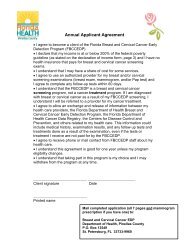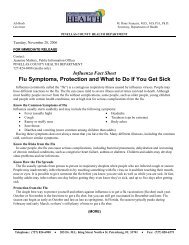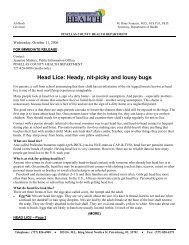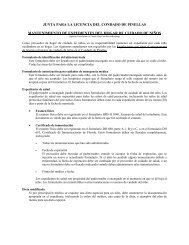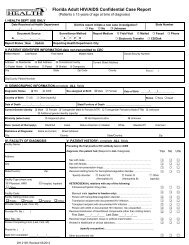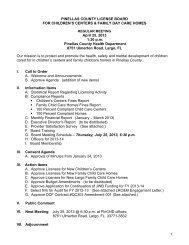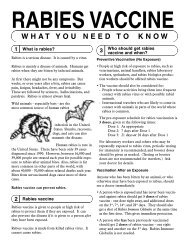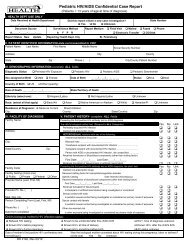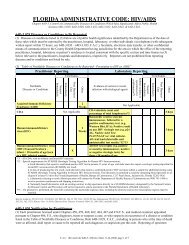Pinellas County Hazard Identification and Vulnerability Assessment
Pinellas County Hazard Identification and Vulnerability Assessment
Pinellas County Hazard Identification and Vulnerability Assessment
Create successful ePaper yourself
Turn your PDF publications into a flip-book with our unique Google optimized e-Paper software.
inches of rain were recorded.<br />
Probability: Serious flooding has occurred four times in the past 20 years, with one<br />
incident, May 8, 1979, causing a Presidential Disaster Declaration. Although the<br />
drainage system has been greatly improved as a result of the past flooding, there is<br />
potential for the situation to occur again during periods of higher than normal rainfall.<br />
Based on past history, <strong>Pinellas</strong> <strong>County</strong> can expect heavy rainfall to cause flooding once<br />
every 3.3 years. Therefore, the probability for major flooding is considered to be high<br />
during any given year.<br />
<strong>Vulnerability</strong>: With the high probability of fresh water flooding <strong>and</strong> the continued<br />
development throughout <strong>Pinellas</strong> <strong>County</strong>, both on low ground <strong>and</strong> high ground, the<br />
vulnerability of population <strong>and</strong> property must also be considered as high. Historically,<br />
the older sections of <strong>Pinellas</strong> Park, Dunedin, <strong>and</strong> Clearwater have shown a vulnerability<br />
to fresh water type flooding.<br />
Maximum Threat: The maximum threat to <strong>Pinellas</strong> <strong>County</strong> would be a May 8, 1979 type<br />
of storm, which deposited almost 18 inches of rainfall in the lower central part of the<br />
<strong>County</strong> during a 12-hour period. The situation would become more critical if the storm<br />
was preceded by a long period of rainfall over a one to two month period, or if<br />
accompanied by a high tide situation. Although drainage has been improved, it is<br />
estimated that homes would still be at risk for potential flooding in the <strong>Pinellas</strong> Park <strong>and</strong><br />
North St. Petersburg areas.<br />
Freezes<br />
History: <strong>Pinellas</strong> <strong>County</strong> is subject to frost <strong>and</strong>/or freezing temperatures from November<br />
through March each year. Since 1962, there have been 12 freezes that have affected<br />
<strong>Pinellas</strong> <strong>County</strong>. The month <strong>and</strong> year are shown below:<br />
December 1962 January 1981 December 1985<br />
November 1970 January 1982 January 1986<br />
January 1977 January 1985 February 1989<br />
Probability: Freezes have occurred in <strong>Pinellas</strong> <strong>County</strong> 12 times during the last 36 years.<br />
Therefore, the <strong>County</strong> can expect a freeze once every three years. The probability of a<br />
freeze is considered as high.<br />
<strong>Vulnerability</strong>: <strong>Pinellas</strong> <strong>County</strong> is primarily an urban <strong>County</strong> with only a small amount of<br />
acreage devoted to agriculture. However, the population most vulnerable to freeze is<br />
the elderly population. Past freezes have caused power outages in several areas. This<br />
has required the electrical power companies to institute rolling “brown-outs”, <strong>and</strong> have<br />
required the opening of shelters.<br />
Maximum Threat: The maximum threat for <strong>Pinellas</strong> <strong>County</strong> would be a sustained period<br />
of low temperatures below 30 degrees in December or January. This threat would<br />
devastate the small citrus industry in <strong>Pinellas</strong> <strong>County</strong>, <strong>and</strong> due to power outages,<br />
selected areas of the population would be at risk.



